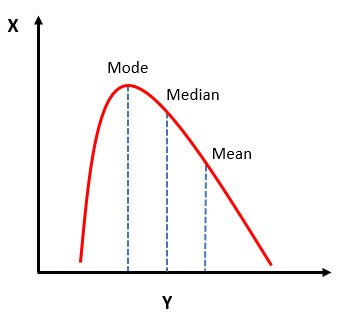A Psychologist that worked with learning and designed a study that tied dogs salivating to food
Ivan Pavlov
The theory that human life and psychology is based on the way in which humans have evolved
Evolutionary theory
Experimental method
 What type of distribution is this?
What type of distribution is this?
Normal
Name one ethical guideline
consent
debreifing if deception
informed of risks
voluntary
right to privacy
A researcher who focused on childhood development based on stages and expected tasks to accomplish
Jean Piaget
A type of Psychology that involves a schedule of reinforcement and punishment to create behaviors
Behaviorism
The research strategy of asking groups of people questions, but can some time have issues with honesty
What is the survey method
Find the Median
7 10 9 4 3 4 2 6
5
Name a famously unethical study.
Milgram's obedience study
Stanford Prison Experiment
Little Alfred Study
Monster Study
Genie
A researcher who created a client-centered approach to therapy
Carl Rogers
The way in which humans develop over a lifetime and the challenges that they need to accomplish
Developmental Psychology
The research method of watching the subjects in their own environment
Naturalistic observation
Find the Mode
7 10 9 4 3 4 2 6
4
Dr. Mast, a psychologist, has a client, Tim, who threatens to seriously harm his brother, Carl. Tim has a history of serious violence and the means to carry out the threat
What must Dr. Mast ethically do?
inform carl
Focused on self efficacy and modelling behavior as seen in the Bobo Doll Expierment
Albert Bandura
Looking at the whole individual and stresses the idea of self efficacy and self actualization
Humanistic
A study in which the researchers study the same group of people over several time periods, asking similar questions
Longitudinal studies
Find the mean
7 10 9 4 3 4 2 6
5.625
What ethical violation happens below?
A psychological researcher designs a study to determine whether positive feedback affects self-esteem. The researcher requires each participant to toss twenty coins into a coffee can that is three feet away. Half of the participants are told that their performance is superior, and the other half are told that their performance is well below average. Although some of the participants want to quit tossing coins after a few attempts, they are told that once they begin the study they have to complete it. After the coin toss, participants take a test measuring self-esteem. Following the test, all participants are debriefed and told that information about their performance was false. Results of the study indicate that participants who are told their performance is well below average report lower levels of self-esteem than do those who are told their performance is superior.
violation of the right to withdraw
One of the first Psychological theorists, based on ideas of stages of sexual development
Sigmund Freud
The theory that people tend to see the whole before the parts
Gestalt Psychology
asking the same questions of a sample population and analyzing the variables
cross sectional study
What type of distribution is this?

Positive
Find an ethical flaw below
A researcher was interested in studying whether participants who were angry would become less angry if they had a chance to release their anger. At 10:00 in the morning, 6 students met individually with a confederate named Steve. They were each asked to write an essay, which Steve evaluated. He told each student, “This is the worst essay I ever read.” They were then asked to sit in a room quietly for 10 minutes. At 1:00 in the afternoon, a second group of 6 students each wrote an essay, and Steve once again said the essays were the worst he had ever read. This second group was then asked to punch a punching bag. After either sitting quietly or punching the punching bag, the students were given the opportunity to blast a horn when Steve entered the room. The researcher operationally defined anger as the length of time that the students blasted the horn. The researcher assumed students who were given an opportunity to punch the punching bag would be less likely to blast the horn in Steve’s presence. The table below indicates how long, in seconds, each subject blasted the horn when Steve was present.
Did not debreif students